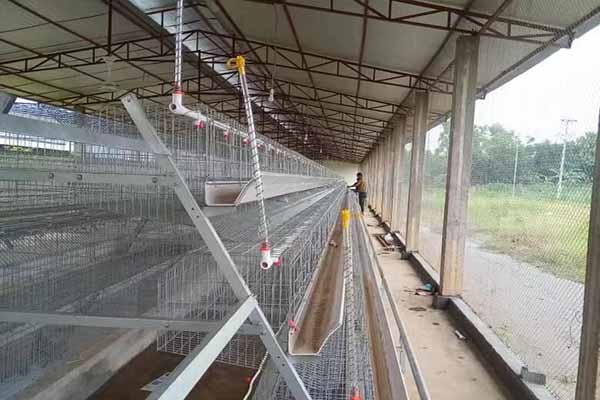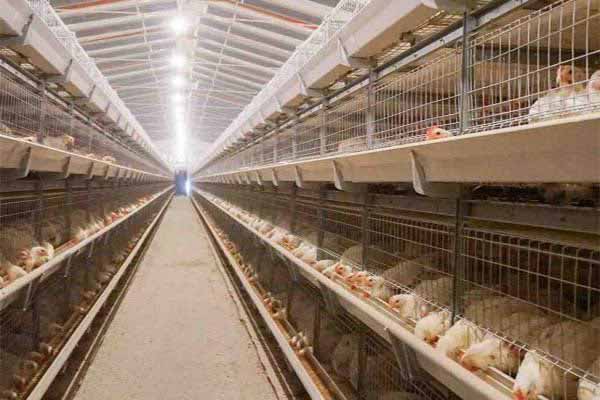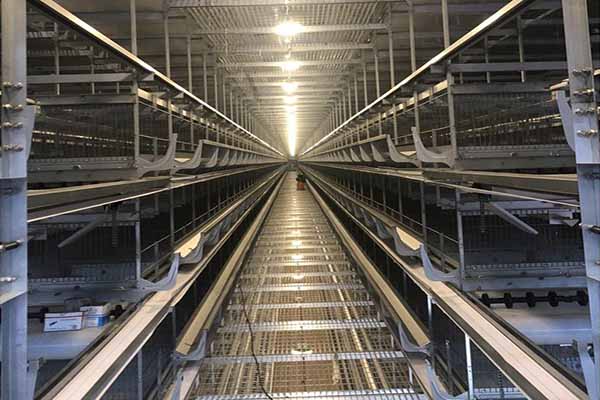Broiler Farming in Cage System: A Comprehensive Guide to Modern Practices
Time : 2025-06-25
Broiler farming in a cage system has become a prevalent method in the poultry industry due to its efficiency and ease of management. This article delves into the intricacies of broiler farming in a cage system, providing a comprehensive guide to modern practices, equipment, and benefits. By understanding the nuances of this farming method, producers can optimize their operations for better yield and profitability.
—
Introduction to Broiler Farming in Cage System
Broiler farming involves the rearing of chickens for meat production. The cage system is a preferred method as it allows for controlled environment conditions, easy monitoring, and efficient feed conversion. This section will provide an overview of the cage system and its significance in broiler farming.
The cage system is designed to house broilers in individual or grouped compartments. These compartments are constructed to ensure proper ventilation, temperature control, and ease of cleaning. The system also facilitates the monitoring of individual bird health and performance.
—
Design and Construction of Broiler Cages
The design and construction of broiler cages are crucial for the success of the farming operation. This section will explore the key aspects of cage design, including size, material, and ventilation.
Size and Capacity
Broiler cages are available in various sizes, depending on the number of birds to be housed. It is essential to select the appropriate size to ensure each bird has sufficient space for movement and to minimize stress.
Material
High-quality steel or stainless steel are commonly used materials for constructing broiler cages. These materials are durable, resistant to corrosion, and easy to clean, which is essential for maintaining hygiene in the farming environment.
Ventilation
Proper ventilation is crucial for maintaining a healthy environment within the cage system. The design should include adjustable vents to control air flow, ensuring adequate oxygen supply and temperature regulation.

—
Feeding and Watering Systems
Efficient feeding and watering systems are integral to the success of broiler farming in a cage system. This section will discuss the different types of feeding and watering systems available and their benefits.
Feeding Systems
Automatic feeding systems are widely used in broiler farming. These systems ensure consistent feed distribution, reduce waste, and prevent birds from overeating. There are various types of feeding systems, including chain feeders, chain belt feeders, and pan feeders.
Watering Systems
Automatic watering systems are equally important for maintaining hydration in broilers. The systems are designed to provide continuous water supply, preventing birds from becoming dehydrated and ensuring optimal growth rates.
—
Environmental Control and Health Management
Maintaining optimal environmental conditions and health management are critical in broiler farming. This section will discuss the key aspects of environmental control and health management within a cage system.
Environmental Control
Environmental control systems, such as thermostats and humidity sensors, are essential for maintaining ideal conditions within the cage system. These systems help regulate temperature, humidity, and air quality, ensuring the well-being of the broilers.
Health Management
Regular health checks, vaccinations, and disease prevention protocols are essential for maintaining a healthy flock. Producers should implement  biosecurity measures to minimize the risk of disease outbreaks and ensure the overall well-being of the broilers.
biosecurity measures to minimize the risk of disease outbreaks and ensure the overall well-being of the broilers.
—
Benefits of Broiler Farming in a Cage System
Broiler farming in a cage system offers several benefits, including improved efficiency, better animal welfare, and increased profitability. This section will highlight the key advantages of this farming method.
Efficiency
The cage system allows for precise control over the farming environment, leading to better feed conversion rates and reduced waste. This efficiency translates into cost savings and increased profitability for producers.
Animal Welfare
By providing individual compartments and controlled environmental conditions, the cage system enhances animal welfare. Birds are less prone to injury and stress, leading to healthier and happier flocks.

Profitability
The combination of efficiency and animal welfare results in higher productivity and better market prices for broiler meat. This, in turn, increases the profitability of broiler farming operations.
—
Conclusion
Broiler farming in a cage system is a modern and efficient method for producing high-quality meat. By understanding the design, construction, and management of cage systems, producers can optimize their operations for better yield and profitability. This article has provided a comprehensive guide to broiler farming in a cage system, highlighting the key aspects of this farming method.











